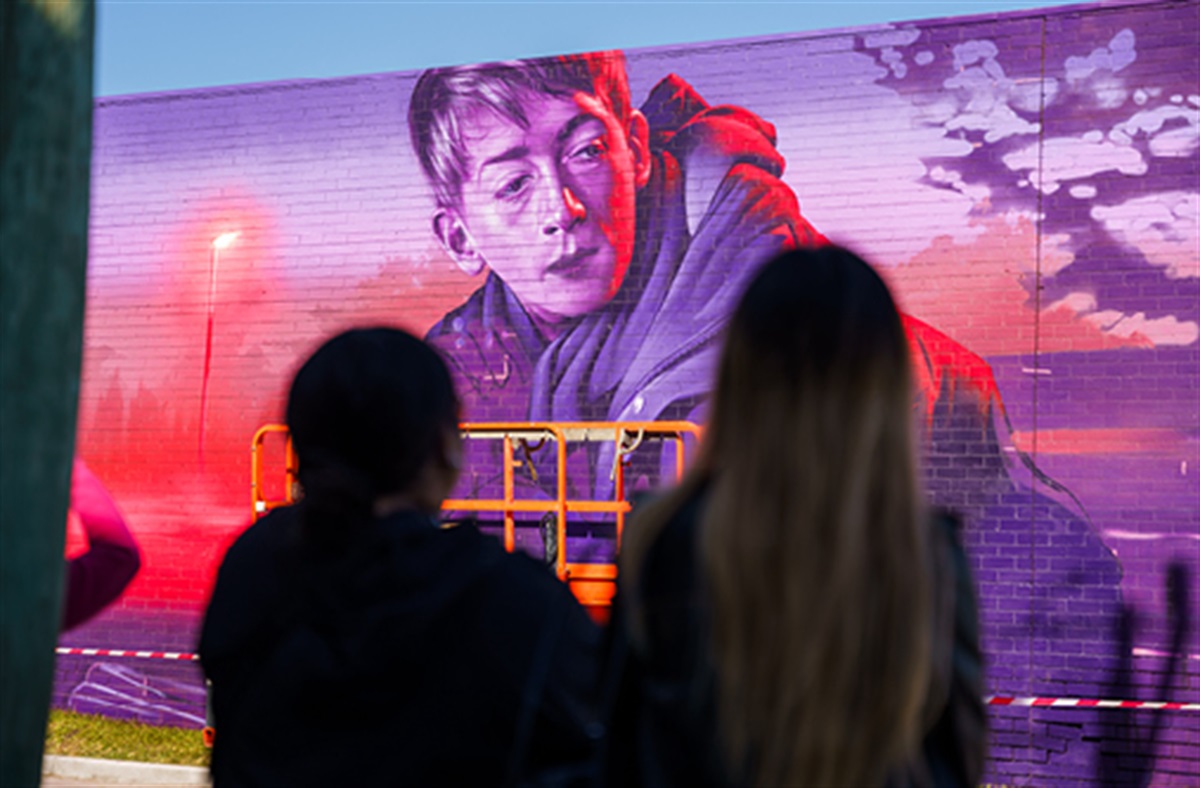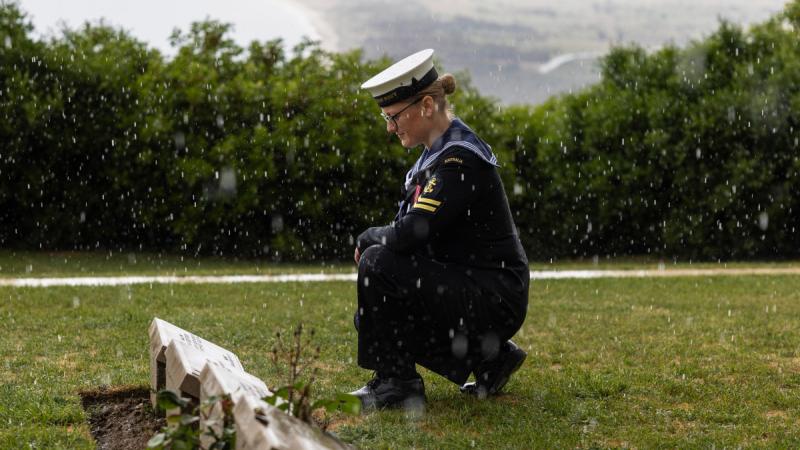Around 4,100 same-sex marriages have been registered to couples living in New Zealand since the Marriage Amendment Act came into effect, figures released today by Stats NZ show. This marks the 10-year anniversary of the law change on 19 August 2013.
Same-sex marriages made up just over 2 percent of all marriages to couples in New Zealand over the last decade.
“More female couples tie the knot each year than male couples,” insights analyst Rebekah Hennessey said.
Between 19 August 2013 and the end of 2022, around 2,700 female couples and 1,400 male couples who lived in New Zealand were legally married. Over that time, another 1,600 female couples and 1,200 male couples who lived overseas came to New Zealand to get married.
Same-sex marriages made up 12 percent of all couples from overseas marrying in New Zealand since 2013.
From 2013 to 2017, an average of 58 percent of same-sex couples from overseas who married in New Zealand were from Australia. Australia has remained the country with the highest proportion of same-sex couples coming to New Zealand to marry over the last decade. That proportion dropped to around 26 percent after Australia amended its federal Marriage Act on 9 December 2017 to give same-sex couples the right to marry, but the figures for couples from Australia marrying in New Zealand increased again in 2021 and 2022.
Couples from China (including Hong Kong) made up the second highest proportion of couples coming to New Zealand for a same-sex marriage, an average of 22 percent each year between 2013 and 2019. They were followed by couples from the United States and United Kingdom (both 4 percent).
“Responses to the COVID-19 pandemic, including restrictions on gatherings and border closures, resulted in a decrease in both same-sex and opposite-sex marriages in 2020 and 2021, especially for marriages of couples who lived overseas,” Hennessey said.
Last year, the highest proportion of same-sex couples again came from Australia to marry in New Zealand (43 percent of all overseas marriages). This was followed by Singapore (15 percent), China (including Hong Kong), the United States, and United Kingdom (8 percent each).
| December year | NZ female couple | NZ male couple | Overseas female couple | Overseas male couple |
| 2014 | 309 | 180 | 195 | 195 |
| 2015 | 279 | 174 | 237 | 192 |
| 2016 | 294 | 171 | 264 | 204 |
| 2017 | 291 | 174 | 291 | 207 |
| 2018 | 330 | 165 | 237 | 138 |
| 2019 | 264 | 141 | 162 | 102 |
| 2020 | 264 | 123 | 54 | 36 |
| 2021 | 216 | 84 | 6 | 6 |
| 2022 | 318 | 135 | 48 | 39 |
| December year | Female (same-sex couple) | Male (same-sex couple) | Female (all marriages) | Male (all marriages) |
| 2013 | 41.3 | 45 | 30.4 | 32.4 |
| 2014 | 37.5 | 43.2 | 30.5 | 32.5 |
| 2015 | 36.4 | 35.5 | 30.5 | 32.4 |
| 2016 | 34.7 | 35.8 | 30.5 | 32.4 |
| 2017 | 33.9 | 34.8 | 30.5 | 32.3 |
| 2018 | 34.9 | 35.8 | 30.7 | 32.3 |
| 2019 | 32.9 | 34.8 | 30.8 | 32.5 |
| 2020 | 34 | 35.2 | 30.8 | 32.4 |
| 2021 | 34.2 | 37.3 | 30.8 | 32.2 |
| 2022 | 32.7 | 34.1 | 31.3 | 32.5 |
Divorces for same-sex couples
In the last five years (2018-2022), there were on average 91 divorces granted to same-sex couples each year. Couples must be separated for at least two years before they can apply for a divorce. The data included couples who were in a civil union or a marriage.
For marriages that have occurred since 2013, same-sex marriages are statistically more likely to end in divorce than opposite-sex marriages. Around 9 percent of same-sex marriages since 2013 have ended in divorce within five years of marriage, compared with 6 percent for opposite-sex marriages.
“The data on the proportion of same-sex marriages ending in divorce is still relatively new, with care required when interpreting the data. However, it will be interesting to monitor future change,” Hennessey said.
Changes from civil unions
Civil unions were introduced in New Zealand in April 2005 as a new legal relationship. Both same-sex and opposite-sex couples could form a civil union. Before 2013, however, same-sex couples could not marry.
While the number of opposite-sex couples forming civil unions has remained statistically stable, the number of same-sex couples forming civil unions decreased substantially after same-sex marriage was legalised.
“Since 2014 more opposite-sex couples than same-sex couples have formed civil unions,” Hennessey said.
| December year | Same-sex civil unions | Opposite-sex civil unions | Same-sex marriages |
| 2005 | 204 | 45 | |
| 2006 | 297 | 78 | |
| 2007 | 252 | 63 | |
| 2008 | 255 | 69 | |
| 2009 | 246 | 66 | |
| 2010 | 201 | 72 | |
| 2011 | 234 | 69 | |
| 2012 | 234 | 69 | |
| 2013 | 120 | 66 | 210 |
| 2014 | 21 | 30 | 486 |
| 2015 | 18 | 39 | 453 |
| 2016 | 18 | 33 | 465 |
| 2017 | 21 | 57 | 462 |
| 2018 | 18 | 42 | 492 |
| 2019 | 18 | 36 | 408 |
| 2020 | 15 | 33 | 387 |
| 2021 | 12 | 45 | 300 |
| 2022 | 6 | 24 | 450 |
Wellington home to highest proportion of same-sex marriages
Wellington region has continued to have the highest proportion of same-sex marriages out of total marriages in New Zealand. In 2014, 4 percent of all marriages to couples living in the Wellington region were same-sex couples. This decreased to 3 percent by 2022, but it remains the highest across the broad geographic areas.
The South Island, excluding Canterbury, had the lowest proportion of same-sex marriages in 2014, at 1 percent of all marriages in the area. By 2022, it increased to 2.4 percent. Conversely, Canterbury had the lowest proportion in 2022, with 2.1 percent of all marriages there being same-sex marriages. This was down from 2.7 percent in 2014.
| December year | Auckland | Wellington | Rest of North Island | Canterbury | Rest of South Island |
| 2013 | 2 | 2.6 | 1.4 | 1.1 | 1.2 |
| 2014 | 2.8 | 4 | 1.9 | 2.7 | 1 |
| 2015 | 2.5 | 2.9 | 2.1 | 2 | 2.7 |
| 2016 | 2.5 | 3.3 | 2 | 2.5 | 2 |
| 2017 | 2.4 | 4.2 | 1.9 | 2 | 2.2 |
| 2018 | 2.5 | 3.6 | 2.1 | 2.1 | 2.5 |
| 2019 | 2.6 | 3.1 | 1.9 | 1.7 | 1.4 |
| 2020 | 2.6 | 3.4 | 2.1 | 2.2 | 1.5 |
| 2021 | 1.8 | 2.9 | 1.8 | 1.9 | 2.3 |
| 2022 | 2.6 | 3 | 2.2 | 2.1 | 2.4 |
Marriages, civil unions, and divorces: Year ended December 2022 provides more information on marriages, civil unions and divorces in general.








